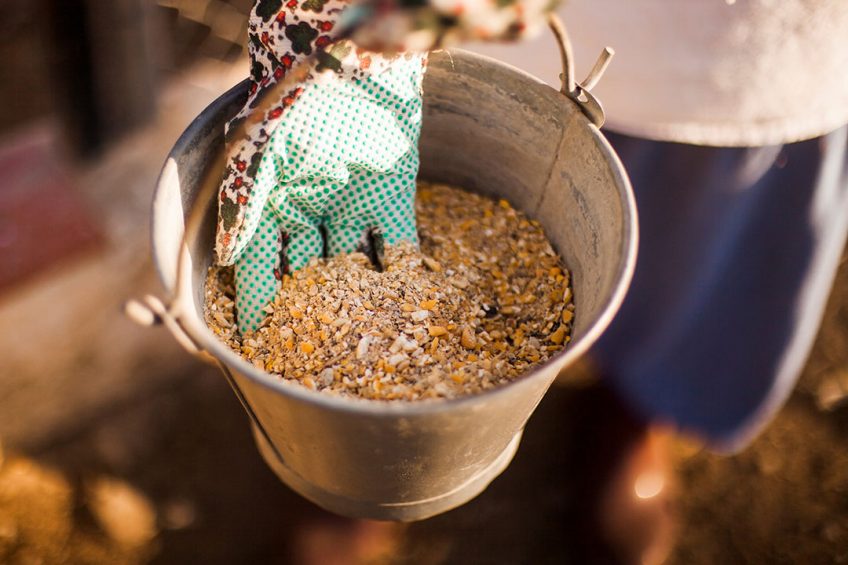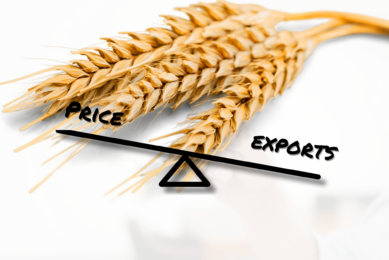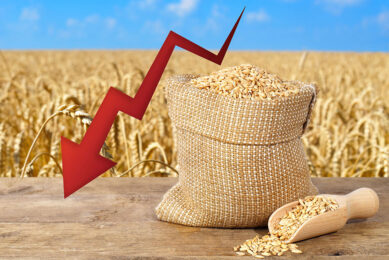A healthy appetite for animal feed in China

China’s feed demand will remain robust in MY2020/21 with continued swine restocking and livestock sector growth contributing to an overall feed demand increase of 15.6 mmt from MY2019/20. Top industry players see rice and wheat substitutes as the major feed trend for the next 2 years.
China’s MY2020/21 feed and residual use for all coarse grains and feed-quality wheat and rice are estimated to increase to 249.9 mmt, up 15.6 mmt from the previous marketing year due to forecast recovery of swine production and an overall growth in feed demand.
Corn prices reach a new high
While overall feed demand continues to recover, high prices and high rates of mould from lodged corn limit feed consumption. Higher corn prices, which rebounded to a new high after decreasing slightly for 2 weeks in November, have meant that the forecast for MY2020/21 feed corn and residual use consumption is less than anticipated.
Grain supply and farmer income shall both be guaranteed.”
Official newspapers in the country called on the Chinese public to see the corn price increase with a more rational view saying that grain prices increased by less than 10-fold over the last few decades, while incomes increased by over 100-fold. “Grain supply and farmer income shall both be guaranteed,” the newspapers noted.
Main corn production losses due to grain toxicity
Corn production for MY2020/21 is 260.7 mmt. The Chinese government noted that severe lodging caused by typhoons in the country’s major corn belt had a limited impact on production and that less production was lost to drought than was expected. Industry sources, however, report estimated losses of at least 8 mmt due largely to higher grain toxicity. There was also concern in the early part of the 2020 growing season over increased impact from Fall Armyworm, but the overall impact was minimal as the worms’ march north was halted before reaching the major corn growing areas.
Forecast corn imports for MY2020/21 are 22 mmt fuelled by high domestic prices, the need and drive to restock grain reserves, and growth in feed consumption.
Most imported sorghum replaces corn as feed
China’s sorghum production in MY2020/21 is 3.55 mmt. New-crop sorghum was priced at roughly US$ 621 (RMB4,100) per mt in mid-December, almost double the price of the same period last year. Higher prices are expected to persist with lower supplies relative to last year. Sorghum consumption for MY 2020/21 is forecast at 10 mmt.
Most imported US sorghum is used as feed to replace corn and is booked by feed mills before arriving in China. The spot sorghum supply is tight, and prices remain high. Sorghum imports are forecast at 6.5 mmt.
Traders scrambling for alternative suppliers of barley
Production of barley in MY2020/21 is unchanged at 900,000 t as government incentives target other cereal and coarse grains. Barley imports are estimated at 7 mmt though China’s trade remedies (antidumping and countervailing duty assessment) on Australian barley, totalling 80.5%, is due to run for 5 years and has traders scrambling for alternate suppliers.
Wheat replaces up to 30% of corn for feed
Wheat production is higher than last year owing to yield gains even though planted area is expected to be lower. Wheat consumption is forecast at 132 mmt, down from original estimates due to reduced feed use and lower-than-expected industrial use. Some feed mills have indicated they are substituting as much as 15-30% of wheat for corn. Wheat imports are forecast at 8.5 mmt in MY2020/21.
Rice increasingly used in feed
Milled rice production in MY2020/21 is forecast at 148.3 mmt while consumption is forecast at 152 mmt, which is higher than the original forecast due to ever rising feed use. According to industry sources, non-public rice auctions targeted specifically for feed use have been ongoing for weeks with 1 mmt per week offered since August. The rice must first be broken by a designated SOE and mixed with a ratio of 85% rice and 15% wheat to prevent it from going into the food supply chain before delivery to feed mills. Feed mills were slow to purchase in the initial weeks due to storage concerns but have since warmed up to the idea with rising corn prices.
The information in this article has been extracted from a USDA GAINS report prepared by Chase Mcgrath.











